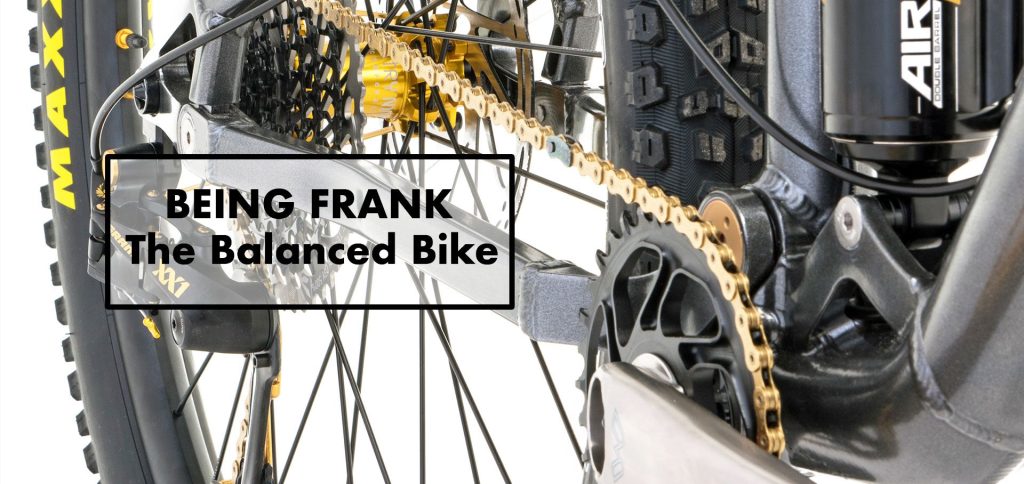

Some good ideas get buried under Marketing. While unfortunate this is not surprising, particularly in this day and age of ever shorter attention spans, immediate stimulus requirements, and more and more brands trying to grab a piece of the market pie. But that is for another blog. This blog is about one of those buried ideas. It is not a new idea – I actually wrote a piece on this idea for a company news letter about twenty-five years ago. And it’s not an idea that I can claim is solely mine. Nonetheless, it is an idea that can enhance a rider’s riding satisfaction, ease her anxiety, and likely save her some money.
The concept of the Balanced Bike is simple to understand but can be difficult to implement. The quality and price of parts on a Balanced Bike are relative to their contribution to the performance/function of the bike given its intended use. Puncture-resistant tires on a commuter, hydraulic disc brakes on a mountain bike, and lightweight carbon wheels on a racing bike all seem to make sense – titanium cranks on a coffee shop bike, not so much. But given the large number of models available of those products and their functional relevance, the difficulty stems from determining what is really needed and what is more than enough.
The Dura Ace and 105 rear derailleurs (RD) are of the same design, they do the same thing the same way, and they are interchangeable. This has been the case for many years and is not limited to road parts or Shimano – one can substitute “SRAM, XX1, and XXO1” if so inclined. The Dura Ace derailleur weighs less due to better grade materials (a splash of titanium in place of steel) and materials processes (a dash of forgings in lieu of castings or stampings). And occasionally there’s a different functional spec, as in the case of the Dura Ace RD using cartridge bearings in the pulleys instead of bushings. Go ride new Dura Ace and 105 bikes back to back, and if you feel a difference in shifting, it’s probably due to the competence of the person(s) that assembled the bikes. However, after 10,000 or 20,000 miles the Dura Ace parts are going to maintain more of that new feel and function due to those better materials and materials processes. So if you’re a pro racer training and racing 20,000+ miles per year, Dura Ace does not put your bike out of balance. On the other hand, if you ride less than 5,000 mile per year, never pin a number on, and have a full-time job, upgrading to a Dura Ace RD instead of, say a set of larger volume, high-quality tubeless tires would not lead to a Balanced Bike.
To be fair, let’s consider two Cane Creek products: the 110 and 40-series headsets. While our engineers can make your eyeballs spin explaining the detailed design differences between the two, functionally the designs are the same. So how would each fit into the Balanced Bike idea? If you prefer to ride in nice weather, and cycling is just one of the activities biding for your limited leisure time, go with the 40-series. But if cycling is an obsession and pouring rain or sub-freezing temperatures are just challenges, the 110 would be the way to go.
Lastly, it’s not just about the brands and the marketing of their offerings. The various systems are not equal in their contribution to your riding satisfaction and performance. No one is ever going to lose a race because their seat post is 45 grams heavier (the weight of a Snicker’s bar). However, 45 grams on a rim will add seconds to your time during your club’s annual hill climb competition. After all, the rim is THE most important component with regards to weight due to the fact that it’s rotating and that it’s rotating in a big circle.
So the Balanced Bike places emphasis on the parts that will positively impact one’s riding the most and de-emphasizes those that have little or no impact. WARNING: Many times this is not in sync with how brands position and market their parts. For example, one rider’s Balanced Bike may include a mix of SRAM GX and XO1 parts. It may also be more balanced with mid-level aluminum wheels but top-of-the line shock and fork.
With all this said, if you want the more expensive stuff, go for it! As a sucker for high-end goodies and CEO of a company that offers a range of premium parts, I’m certainly not going to tell you that you shouldn’t. But make sure that you are informed and honest with yourself about what is really going to affect your riding satisfaction. Lastly, do yourself a favor and don’t skimp on those parts that really do matter for your style of riding.
Monday: 10:00 am – 5:00 pm
Tuesday – Thursday: 10:00 am – 5:00 pm
Friday: 10:00 am – 5:00 pm
Saturday – Sunday: Closed